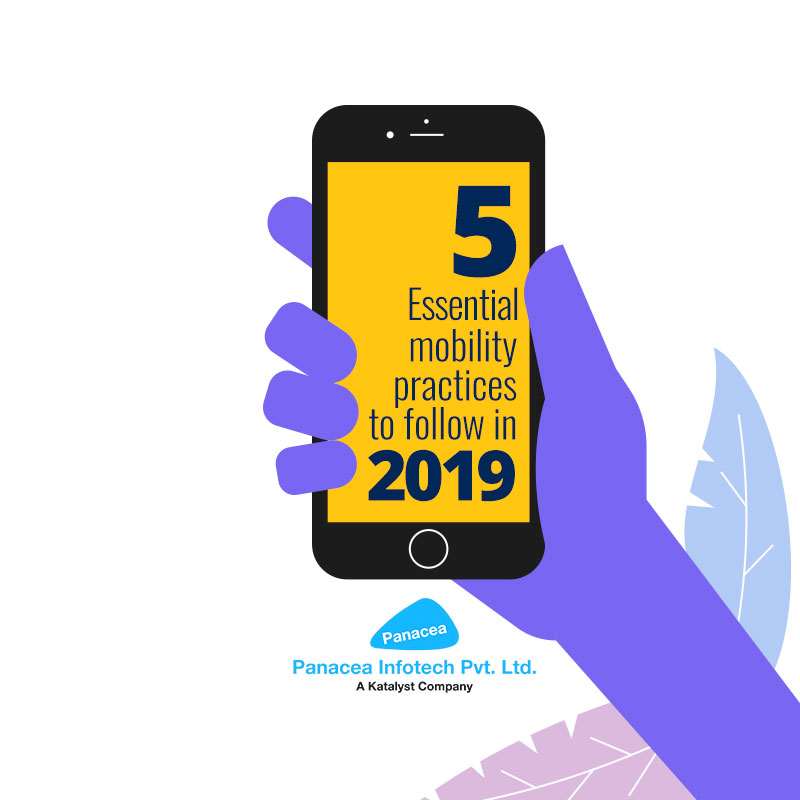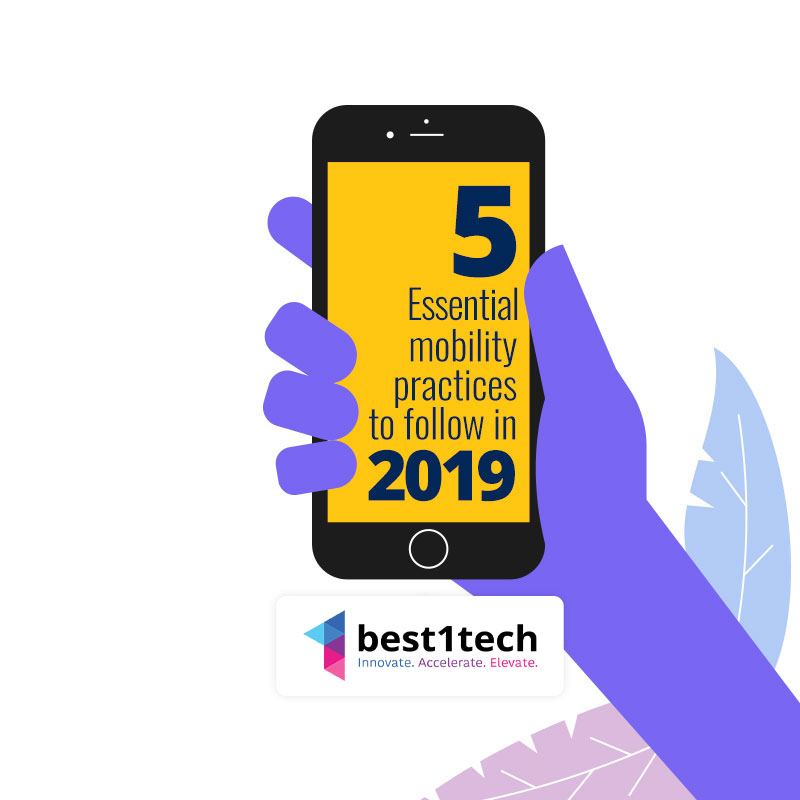Enterprise Mobility has always been a significant account for different directions when it comes to developing a business after some current sessions. With the increasing demands of employees and customers, the growth potential of mobile and the growing competition has made the initiative of enterprise mobile these days highly significant. Therefore, one organization should give top priority to mobile; otherwise, they could lose their market share.

Companies are exploring different ways to emerge in the interbitt mobility game. They are looking forward with the help of mobile device management, mobile enterprise service, human resources mobility initiative, combination or rapid change. In essence, enterprise mobility is in practice to discuss and business owners look forward for
mobile application development
for their business.
Let’s talk deeply about enterprise mobility and what trends of enterprise mobility businesses should follow in 2019.
Enterprise Mobility:
In Nutshell – Enterprise Mobility defines the operation of its business by various companies, to develop and distribute business services through mobile-based solutions, and also explains the mobile products that are launched explicitly for customers.
Enterprise mobility usually refers to things like mobile apps, which are employees or business-focused, quick strategies, client-centric mobile applications, change management and DevOps, and other initiatives taken for digital changes.
Let’s take a look at what one organization can do to improve its enterprise mobility management.
1. Consider the various options for mobile app development
:- According to studies, some people prefer a hybrid approach to the development of mobile apps, in which web technologies like HTML5 are used to develop applications that are eventually placed in a container that will give you access to basic device features. Some prefer the basic app development on the iOS and Android mobile platforms while others prefer web development languages.
These days, html5 is getting more support. Supporting and creating mobile apps on different platforms may be more costly to you. And this is a big problem for an organization that creates apps that will be using other partners, suppliers or external contractors.
The native script is one of the technologies that are highly in trend and is an open source system, which, according to some experts, may have a future for mobile app development, which believes that this framework provides more flexibility than Apache Cordova, which is just hybrid app development.
Android and
iOS app developers
can develop native applications using native scripts, and they do not even need to write the original code. They can use online known resources like JavaScript and HTML5 for their mobile projects. There are many benefits to using a single language, but it only lets you work or integrate with the basic capabilities of the device.
2. Keep your organization data and apps safe:
– Since the use of mobile applications and devices in organizations is increasing every day, it also increases privacy and security risks. For example, by using personalized gadgets to access company data from anywhere or at any time, your network can be accessed via virus attacks, data leaks, and illegal access. Many organizations rely on mobile security policies that adjoin solutions to control the exploits made by jail-broken devices. Known threats identify many of these solutions; they are unable to find stranger OS, network and app exposure.
3. Keep users in mind when designing mobile apps:
– If you do not design an app properly and users do not want to use it anyway, then all your efforts and skills will be in vain. An organization should recognize the issues of its employees and create a mobile app that will reduce their problems.
To rise above the barriers that an app can embrace immediately, be sure to interact with promising users and understand how they are going to use your app. For example, you might need to design an offline application, if sales reps sometimes work in places with no authentic network connections.
4. Create safe user credentials:
Usernames, such as usernames and passwords, must be made with the best care and safety. Credentials which are sufficient for some types of apps, may not be suitable for other types of apps, which require more security.
For example, a small number of stars, while the game scoreboard or leaderboard can have accurate authentication for users, they will not be enough for a social networking app.
5. Follow new tech trends:
Continuous development of new technologies can ease mobile device security. Specifically, focuses on protecting at Android OS level for work solutions. It can keep individual and professional ambient apart by supplying secure containers or profiles on Android gadget’s trendy generation. Whereby it is capable of managing enterprise-level controls, while users control only their personal information.
Also, this work solution protects the app from enterprise data and user’s actions that are carried out outside of their profile, such as ordering something from unknown sites, side-loading web applications, or other activities that are not possibly safe.
Summing Up
:
It proved that enterprise mobility solutions are essential if they developed, followed and applied significantly. Therefore, businesses must look towards the trends and contract with
best mobile application Development Company in USA
and across the globe ultimately leading to better ROI.
Keep the above points in mind, execute mobility and handle it efficiently. To find out which of the practices as mentioned above can benefit from your business model, contact our specialists or drop us a mail at

